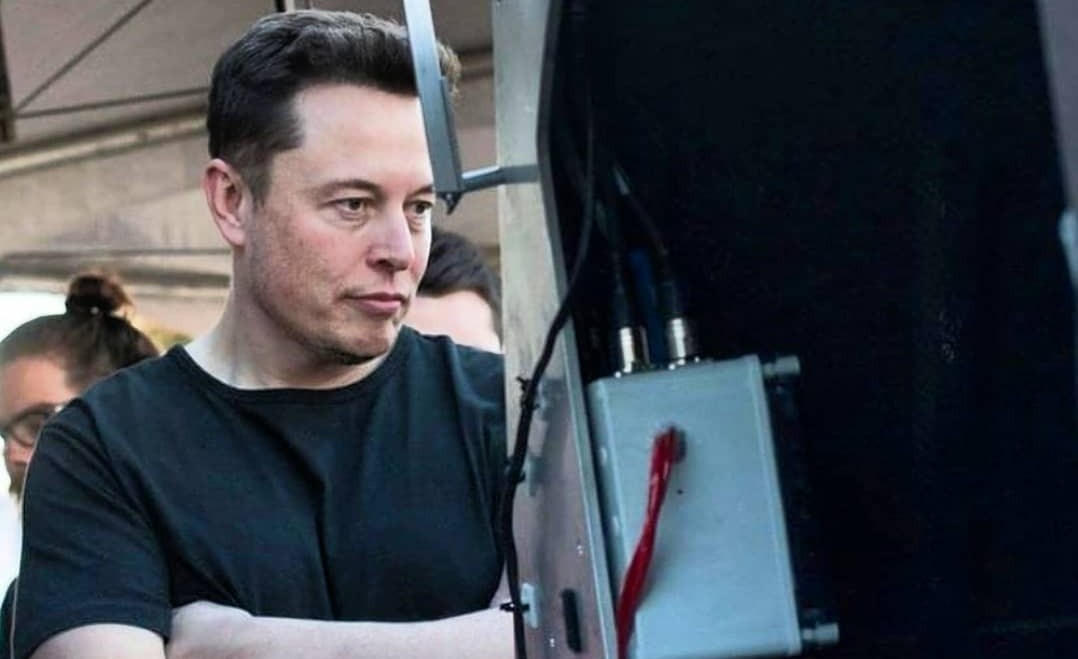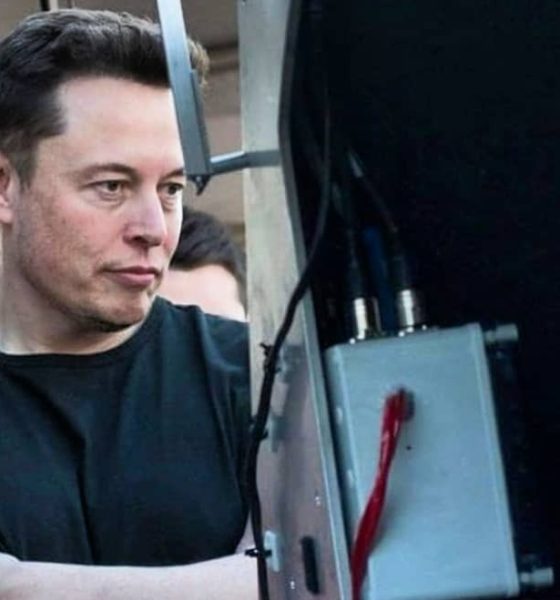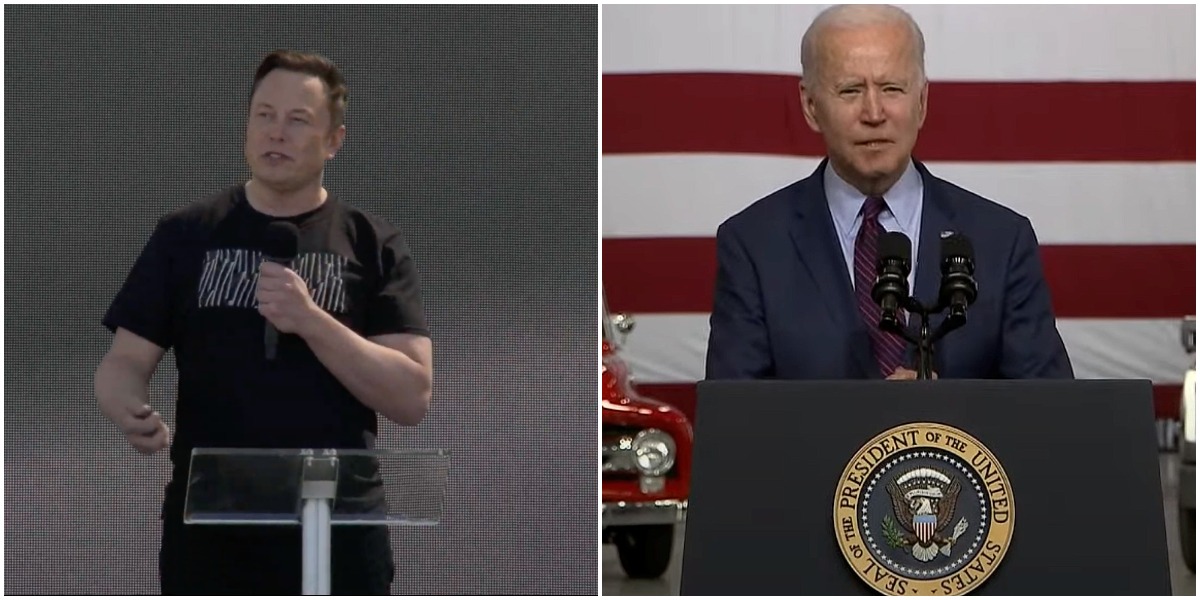

News
OPINION: Musk’s distaste for Biden incentives would even EV playing field
Tesla CEO Elon Musk had an idea during an interview last evening with the Wall Street Journal: Get rid of government incentives for everyone, including electric vehicles, gas, and oil subsidies. The idea, while it would eliminate potentially $12,500 from an EV’s price tag (if it’s built in a Union facility in the United States with a U.S.-produced battery, and it’s a Chevrolet Bolt), might be the best way for consumers to choose what vehicle would be best for them, and it might be the most ideal way for political interests to subside from the bigger picture: transitioning away from combustion engine vehicles.
It is no secret that Tesla fans have felt slighted by President Joe Biden and other members of his administration. Despite dominating the U.S. EV market share and, without much evidence to suggest otherwise, being the reason so many car companies are deciding to dive into electrification, Tesla is not a word that has been uttered from the President’s mouth. However, other companies, like Ford, General Motors, and others, who are working to transition to EVs, are getting the attention.
In the big picture of the mission, it is great that car companies are continuing to work toward complete electrification, but is it fair for the EV leader and the real reason these legacy companies have to transition or else be left behind cannot get any positive support from the U.S. Presidential Administration?
Elon Musk thinks President Joe Biden’s EV incentives should be a thing of the past.
All of these points bring up perhaps the biggest and most bold statement Musk has made regarding the EV incentives: Get rid of them.
Despite the attractive EV rebate that could put thousands in a consumer’s pocket, especially with the potential for a “refundable” credit based on language in the Build Back Better plan, Musk says that the incentives should not even exist. “Tesla’s made roughly two-thirds of all the electric cars made in the United States. I’m not sure if most people are aware of that. So Tesla’s made roughly twice as many electric vehicles as everyone else has made. Honestly, I would just can this whole bill. Don’t pass it. That’s my recommendation.”
Perhaps this is the right move, simply because it would take politics out of the entire EV sector. At a point where environmental sustainability needs to be one of the focuses of consumerism moving forward, there is no reason for politics or inside interests to disrupt the outright potential of the sector or any of its participants. Not to mention, the obvious ousting of Tesla, Rivian, and other EV makers by the Biden Administration does not necessarily put some consumer minds in the right space. If Biden and others truly cared about transitioning the automotive industry to EVs, would they ignore the largest contributor to the transition? Likely not.
Eliminating incentives from the EV sector would cancel any political influence a consumer may have to digest before purchasing a car. Instead, let the consumer buy what they want, for the price they can afford, at a time when they can afford it. Incentives would likely push the Bolt to sell more units than ever before, especially considering it offers the largest rebate and the vehicle is available for under $30,000 before incentives anyway. It would be a great move to increase the number of EVs on the road, but it would also be unfair to other carmakers, especially the ones who have put more focus on EVs and are pot-committed to transitioning to EVs.
Musk’s idea to rid the system of incentives may be one of the best yet. If people want an electric vehicle, they are going to buy one. Lack of incentives have never stopped consumers from buying $70,000 pickup trucks, a $100,000 Mercedes-Benz, or a $129,000 Model S Plaid. Many people are going to buy the car they want, regardless of what the government might give back in a tax credit. If one thing is for certain, EV tax credits have been proven to be more of a political interest than a consumer advantage.
Musk’s full interview with the Wall Street Journal is available below:
I’d love to hear from you! If you have any comments, concerns, or questions, please email me at joey@teslarati.com. You can also reach me on Twitter @KlenderJoey, or if you have news tips, you can email us at tips@teslarati.com.

News
Tesla FSD Supervised wins MotorTrend’s Best Driver Assistance Award
The decision marks a notable reversal for the publication from prior years, with judges citing major real-world improvements that pushed Tesla’s latest FSD software ahead of every competing ADAS system.

Tesla’s Full Self-Driving (Supervised) system has been named the best driver-assistance technology on the market, earning top honors at the 2026 MotorTrend Best Tech Awards.
The decision marks a notable reversal for the publication from prior years, with judges citing major real-world improvements that pushed Tesla’s latest FSD software ahead of every competing ADAS system. And it wasn’t even close.
MotorTrend reverses course
MotorTrend awarded Tesla FSD (Supervised) its 2026 Best Tech Driver Assistance title after extensive testing of the latest v14 software. The publication acknowledged that it had previously criticized earlier versions of FSD for erratic behavior and near-miss incidents, ultimately favoring rivals such as GM’s Super Cruise in earlier evaluations.
According to MotorTrend, the newest iteration of FSD resolved many of those shortcomings. Testers said v14 showed far smoother behavior in complex urban scenarios, including unprotected left turns, traffic circles, emergency vehicles, and dense city streets. While the system still requires constant driver supervision, judges concluded that no other advanced driver-assistance system currently matches its breadth of capability.
Unlike rival systems that rely on combinations of cameras, radar, lidar, and mapped highways, Tesla’s FSD operates using a camera-only approach and is capable of driving on city streets, rural roads, and freeways. MotorTrend stated that pure utility, the ability to handle nearly all road types, ultimately separated FSD from competitors like Ford BlueCruise, GM Super Cruise, and BMW’s Highway Assistant.
High cost and high capability
MotorTrend also addressed FSD’s pricing, which remains significantly higher than rival systems. Tesla currently charges $8,000 for a one-time purchase or $99 per month for a subscription, compared with far lower upfront and subscription costs from other automakers. The publication noted that the premium is justified given FSD’s unmatched scope and continuous software evolution.
Safety remained a central focus of the evaluation. While testers reported collision-free operation over thousands of miles, they noted ongoing concerns around FSD’s configurable driving modes, including options that allow aggressive driving and speeds beyond posted limits. MotorTrend emphasized that, like all Level 2 systems, FSD still depends on a fully attentive human driver at all times.
Despite those caveats, the publication concluded that Tesla’s rapid software progress fundamentally reshaped the competitive landscape. For drivers seeking the most capable hands-on driver-assistance system available today, MotorTrend concluded Tesla FSD (Supervised) now stands alone at the top.
News
Elon Musk’s Grokipedia surges to 5.6M articles, almost 79% of English Wikipedia
The explosive growth marks a major milestone for the AI-powered online encyclopedia, which was launched by Elon Musk’s xAI just months ago.

Elon Musk’s Grokipedia has grown to an impressive 5,615,201 articles as of today, closing in on 79% of the English Wikipedia’s current total of 7,119,376 articles.
The explosive growth marks a major milestone for the AI-powered online encyclopedia, which was launched by Elon Musk’s xAI just months ago. Needless to say, it would only be a matter of time before Grokipedia exceeds English Wikipedia in sheer volume.
Grokipedia’s rapid growth
xAI’s vision for Grokipedia emphasizes neutrality, while Grok’s reasoning capabilities allow for fast drafting and fact-checking. When Elon Musk announced the initiative in late September 2025, he noted that Grokipedia would be an improvement to Wikipedia because it would be designed to avoid bias.
At the time, Musk noted that Grokipedia “is a necessary step towards the xAI goal of understanding the Universe.”
Grokipedia was launched in late October, and while xAI was careful to list it only as Version 0.1 at the time, the online encyclopedia immediately earned praise. Wikipedia co-founder Larry Sanger highlighted the project’s innovative approach, noting how it leverages AI to fill knowledge gaps and enable rapid updates. Netizens also observed how Grokipedia tends to present articles in a more objective manner compared to Wikipedia, which is edited by humans.
Elon Musk’s ambitious plans
With 5,615,201 total articles, Grokipedia has now grown to almost 79% of English Wikipedia’s article base. This is incredibly quick, though Grokipedia remains text-only for now. xAI, for its part, has now updated the online encyclopedia’s iteration to v0.2.
Elon Musk has shared bold ideas for Grokipedia, including sending a record of the entire knowledge base to space as part of xAI’s mission to preserve and expand human understanding. At some point, Musk stated that Grokipedia will be renamed to Encyclopedia Galactica, and it will be sent to the cosmos.
“When Grokipedia is good enough (long way to go), we will change the name to Encyclopedia Galactica. It will be an open source distillation of all knowledge, including audio, images and video. Join xAI to help build the sci-fi version of the Library of Alexandria!” Musk wrote, adding in a later post that “Copies will be etched in stone and sent to the Moon, Mars and beyond. This time, it will not be lost.”
News
Tesla Model 3 becomes Netherlands’ best-selling used EV in 2025
More than one in ten second-hand electric cars sold in the country last year was a Tesla Model 3.

The Tesla Model 3 became the most popular used electric car in the Netherlands in 2025, cementing its dominance well beyond the country’s new-car market.
After years at the top of Dutch EV sales charts, the Model 3 now leads the country’s second-hand EV market by a wide margin, as record used-car purchases pushed electric vehicles further into the mainstream.
Model 3 takes a commanding lead
The Netherlands recorded more than 2.1 million used car sales last year, the highest level on record. Of those, roughly 4.8%, or about 102,000 vehicles, were electric. Within that growing segment, the Tesla Model 3 stood far ahead of its competitors.
In 2025 alone, 11,338 used Model 3s changed hands, giving the car an 11.1% share of the country’s entire used EV market. That means more than one in ten second-hand electric cars sold in the country last year was a Tesla Model 3, Auto Week Netherlands reported. The scale of its lead is striking: the gap between the Model 3 and the second-place finisher, the Volkswagen ID3, is more than 6,700 vehicles.
Rivals trail as residual values shape rankings
The Volkswagen ID.3 ranked a distant second, with 4,595 used units sold and a 4.5% market share. Close behind was the Audi e-tron, which placed third with 4,236 registrations. As noted by Auto Week Netherlands, relatively low residual values likely boosted the e-tron’s appeal in the used market, despite its higher original price.
Other strong performers included the Kia Niro, the Tesla Model Y, and the Hyundai Kona, highlighting continued demand for compact and midsize electric vehicles with proven range and reliability. No other model, however, came close to matching the Model 3’s scale or market presence.








